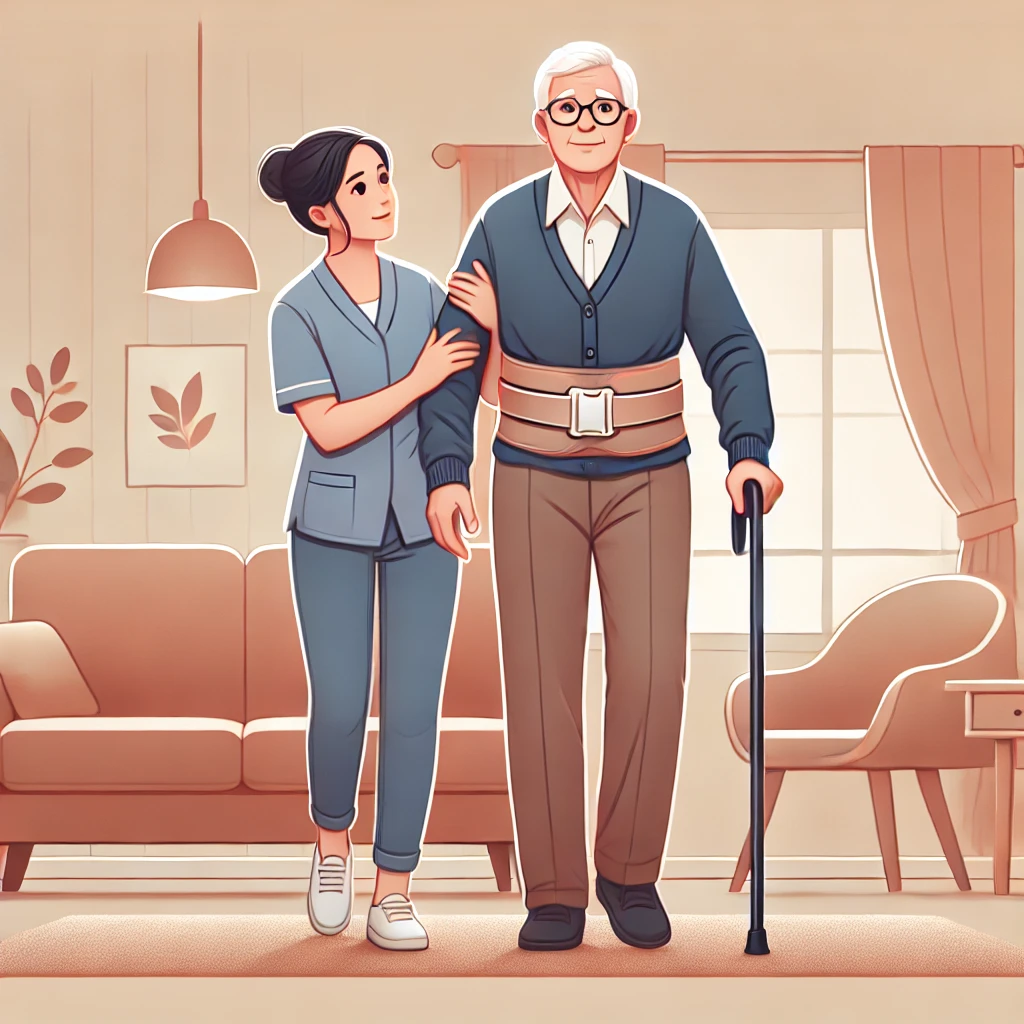As we age, mobility often becomes a concern, especially for seniors recovering from surgery, illness, or dealing with chronic conditions. One of the essential tools in ensuring their safety and comfort during transfers is the gait belt. Gait belts are designed to provide support when assisting elderly individuals with walking, standing, or transferring from one place to another, reducing the risk of falls and injuries. These belts are not only beneficial for seniors but also for caregivers, offering a safer and more efficient way to assist with movement.
In this blog, we will explore the key features, benefits, and considerations when choosing the right gait belt for seniors, including their use in physical therapy settings.
What are Gait Belts?
Gait belts, also known as transfer belts, are wide straps designed to wrap around the waist of a person being assisted. These belts typically feature sturdy handles or loops that caregivers can grip for added support. The belts help stabilize the individual during transfers and reduce the strain on caregivers’ bodies.
Types of Gait Belts
There are various types of gait belts available in the market, each catering to different needs and situations. Here’s a breakdown of the common types and their features:
| Type of Gait Belt | Features | Best For |
| Standard Gait Belt | Made of nylon or polyester with a sturdy buckle | General mobility assistance and transfers |
| Padded Gait Belt | Includes soft padding for extra comfort | Seniors with sensitive skin or discomfort during use |
| Disposable Gait Belt | Lightweight and single-use belts made from durable materials | Short-term use or in healthcare facilities |
| Reinforced Gait Belt | Features reinforced stitching and extra durability | Patients with higher weight or those requiring extra support |
| Gait Belt with Handles | Includes multiple handles for multiple caregivers to assist | Assisting with more complex transfers or more than one caregiver |
Benefits of Gait Belts for Seniors
- Improved Safety
The primary benefit of gait belts is safety. They allow caregivers to help seniors with mobility challenges safely, preventing falls and reducing the risk of injury. The belt provides the right amount of control during transfers.
- Enhanced Comfort
Many gait belts are designed with soft, padded materials, ensuring that seniors feel comfortable during use. Padded belts prevent skin irritation and discomfort during transfers, which is especially important for seniors with fragile skin.
- Ease of Use
Gait belts are simple to use, making them ideal for home caregivers, physical therapists, or nursing staff. With an easy-to-adjust buckle or Velcro closure, caregivers can quickly secure the belt and assist with walking, standing, or sitting.
- Boosting Confidence
Seniors often feel more confident when using gait belts because they know that they have added support during transfers. This can encourage greater independence and participation in daily activities.
- Support During Physical Therapy
Gait belts are often used in physical therapy settings to provide extra stability during rehabilitation exercises. Therapists use gait belts to help seniors with posture, balance, and movement control as they regain strength and mobility.
Considerations When Choosing a Gait Belt
When selecting a gait belt for a senior, consider the following factors to ensure you get the right one for their needs:
- Material: Choose a belt made from durable, easy-to-clean materials like nylon or polyester for longevity and hygiene.
- Size: Gait belts come in different lengths, so choose one that fits comfortably around the senior’s waist. Measure the waist before purchasing to ensure a secure fit.
- Weight Capacity: Make sure the gait belt is rated for the senior’s weight to ensure it will hold up under the strain.
- Comfort and Padding: If the senior has sensitive skin, a padded belt may be a better choice. The extra cushioning can prevent chafing and discomfort.
Investing in Safety and Comfort
Gait belts are a must-have for any caregiver assisting seniors with mobility challenges. These belts not only improve safety during transfers but also offer added comfort and stability. When selecting the right gait belt, consider the type, material, and size to ensure the most effective and comfortable fit for the senior. Whether for use in a home setting or during physical therapy sessions, a gait belt for physical therapy provides essential support to both the senior and the caregiver.
Explore Simply Seniors Co.’s collection of high-quality gait belts designed for comfort and support. Visit our website now to shop!


